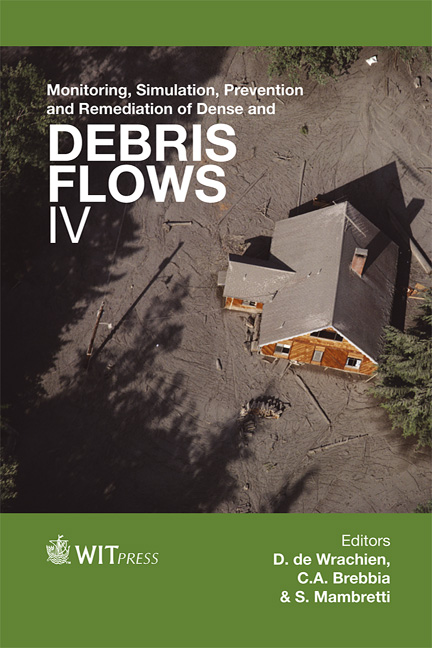Debris-flow Runout Distance: Laboratory Experiments On The Role Of Bagnold, Savage And Friction Numbers
Price
Free (open access)
Transaction
Volume
73
Pages
10
Page Range
27 - 36
Published
2012
Size
1,047 kb
Paper DOI
10.2495/DEB120031
Copyright
WIT Press
Author(s)
F. Bettella, T. Bisantino, V. D’Agostino & F. Gentile
Abstract
An experimental apparatus, consisting of a tilting flume and a final horizontal plane, has been used to investigate the depositional features of debris materials collected from the Pulsano watershed (Southern-Italy). Experiments have been carried out to study the flow behaviour of mixtures at sediment concentrations 0.4≤Cv≤0.6 and maximum grain size of the particles 4mm≤d≤19mm. The flow behavior is described on the basis of the evolution of the front position in the channel and of the runout distance, lateral spreading and flow depth in the horizontal plane. An attempt is made to rate the experimental flows according to the classification of flow regimes based on threshold values of dimensionless Bagnold, Savage and Friction numbers. As a conclusion the experimental results highlight a threshold behaviour of debris-flow mixtures in the runout phase. This results from a particular combination of maximum grain diameters in play and a volumetric concentration limit. When approaching such combination the shape and the maximum length of the deposit change drastically if compared to those of the inertia-dominated regime. Keywords: debris flow, small scale experiments, flow regime. 1 Introduction The estimation of the spreading of debris-flows on alluvial fans has a major role in assessing debris-flow hazards. Laboratory tests on small-scale models are a
Keywords
debris flow, small scale experiments, flow regime.





